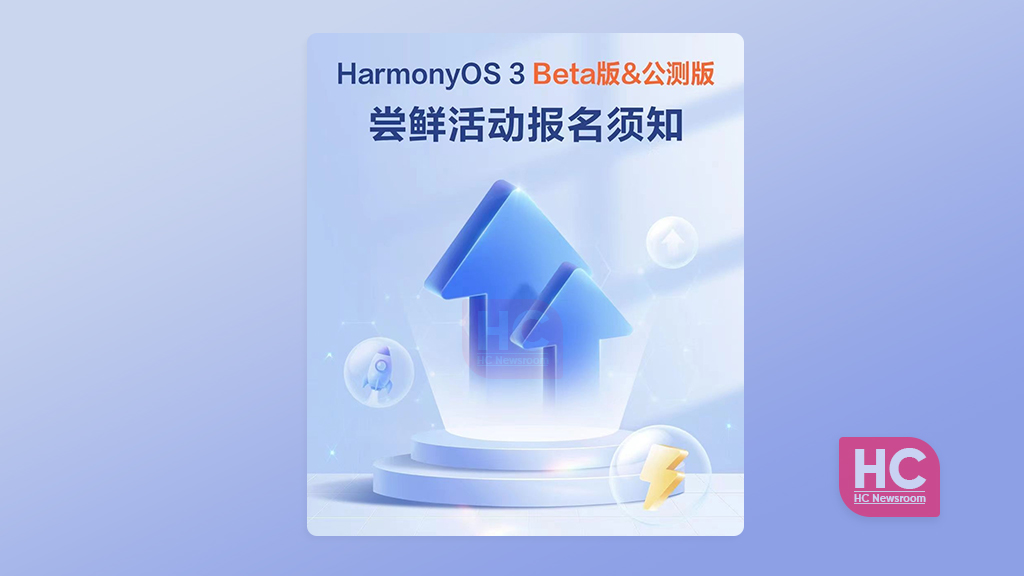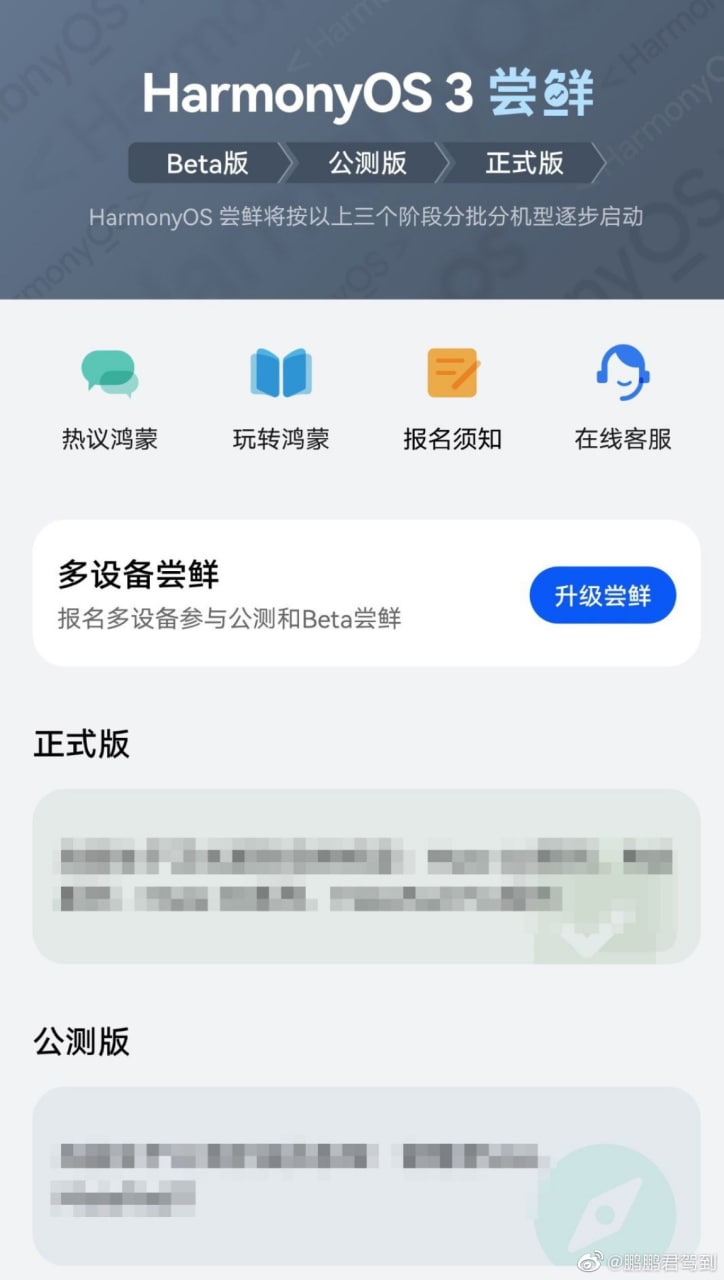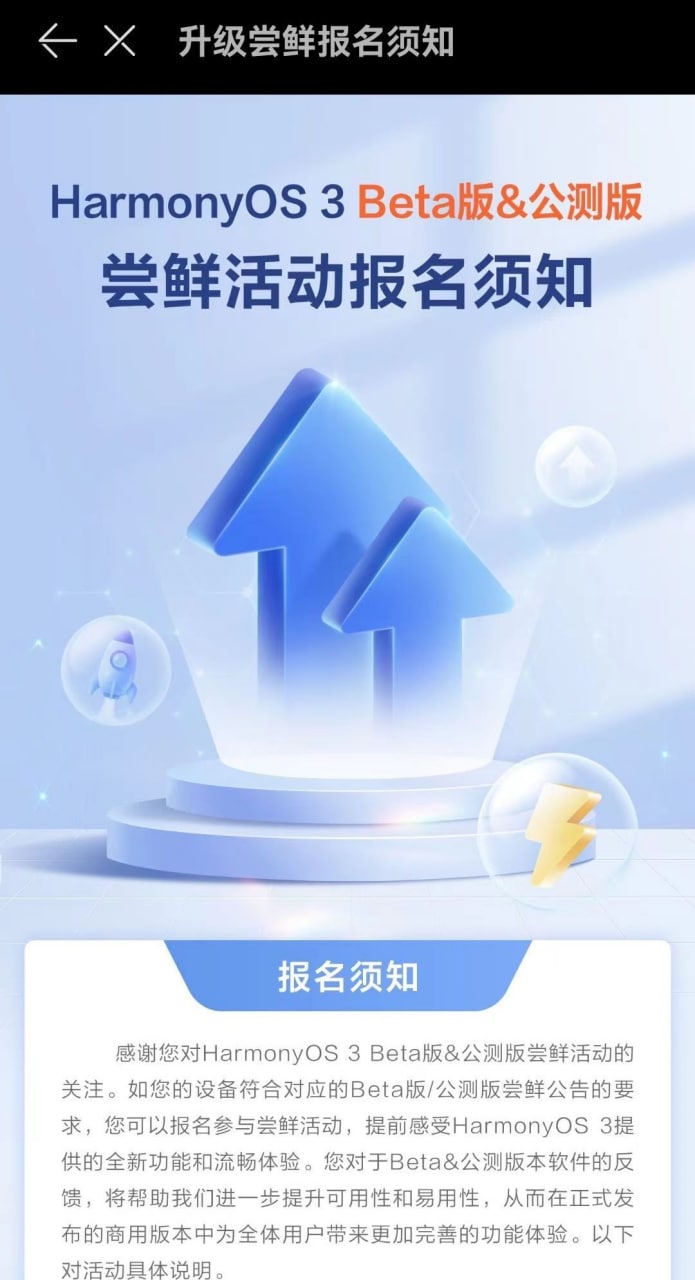HarmonyOS
Huawei HarmonyOS 3.0 closed and public beta notice goes online

After months of developer beta testing, Huawei has finally started to shape the road for HarmonyOS 3.0 user beta. Meanwhile, the company has now released the HarmonyOS 3.0 user beta notice for the upcoming test program. This is quite amazing news, which all of the Huawei smartphone users have been waiting for.
According to the information, Huawei has released the program notes for HarmonyOS 3.0 closed and public beta testing. The aim of this announcement is to inform consumers regarding the upcoming HarmonyOS testing and how they can navigate throughout the testing phase.
The notes also mention how the HarmonyOS 3.0 testing could occur some bugs in the battery and system performance during the timeline of the testing. Therefore, this could be taken as a precautionary step for consumers.
Below you can check the HarmonyOS 3.0 beta notice details (translated)


Beta version
In the version development stage, the beta test version is pushed to a small number of users, which is divided into a log version and no log version. The version number with the word “log” is the log version, otherwise, it is the version without a log. Due to the possibility of bugs or instability after the Beta version is upgraded, the registration review will consider a variety of comprehensive factors (including the number of applicants for the model and the corresponding model, registration order, activity, number of devices, internal testing experience, whether Meet the relevant requirements of the recruitment announcement, etc.).
Note:
1. Due to the differences in beta test functions, the review mechanism for beta early adopters on different devices will be different. After registering for the beta version of the early adopter activities according to the process, the administrator will conduct multiple rounds of screening according to the existing applicant conditions. Those who meet the conditions will be granted the qualification for internal testing and will be given an official notice. It has not been approved because the conditions are not met, please pay attention to other follow-up early adopters.
2. If you have logged into multiple devices with your HUAWEI ID, the list of devices that can be registered may include all devices that have been logged in with the HUAWEI ID. Please check carefully and select the device you are currently using to register. version received.
Under normal circumstances, because the log version is preset with the log system, the power consumption is relatively large, and the performance is relatively poor. If you encounter problems in the experience, you can bill through the Beta club. Participate in the log version of the Beta early adopter activities to find problems and effectively make bills, and actively cooperate with engineers to locate the problem. After the whole event is over, those with higher Beta points will receive certain rewards (Note: For specific reward methods, please pay attention to the recruitment announcement of the corresponding Beta version of the early adopters). Users with rich beta experience are welcome to participate in the registration. Users who are selected for the beta early adopters will have priority to experience the new version, and at the same time, they need to abide by the relevant code of conduct for the beta early adopters.
The period of the beta version early adopter activities is generally 3-6 months, and some products may have a longer testing period. Because the beta version is in the development stage, there will be bugs or instability. There is no need to worry too much when encountering bugs, and subsequent versions will continue to optimize. The official version will be pushed out after the beta version is over.
Public beta
A beta version was released to the public during the version development phase. Since the public beta version is still in the development stage, its running effect may not be as ideal as the official commercial version. For example, some applications (including third-party applications) may be unstable or incompatible, which will affect your experience. Therefore, please consider carefully whether to try it out in advance. At the same time, considering the user experience and compatibility issues, the public beta activity may be suspended for a period of time.






